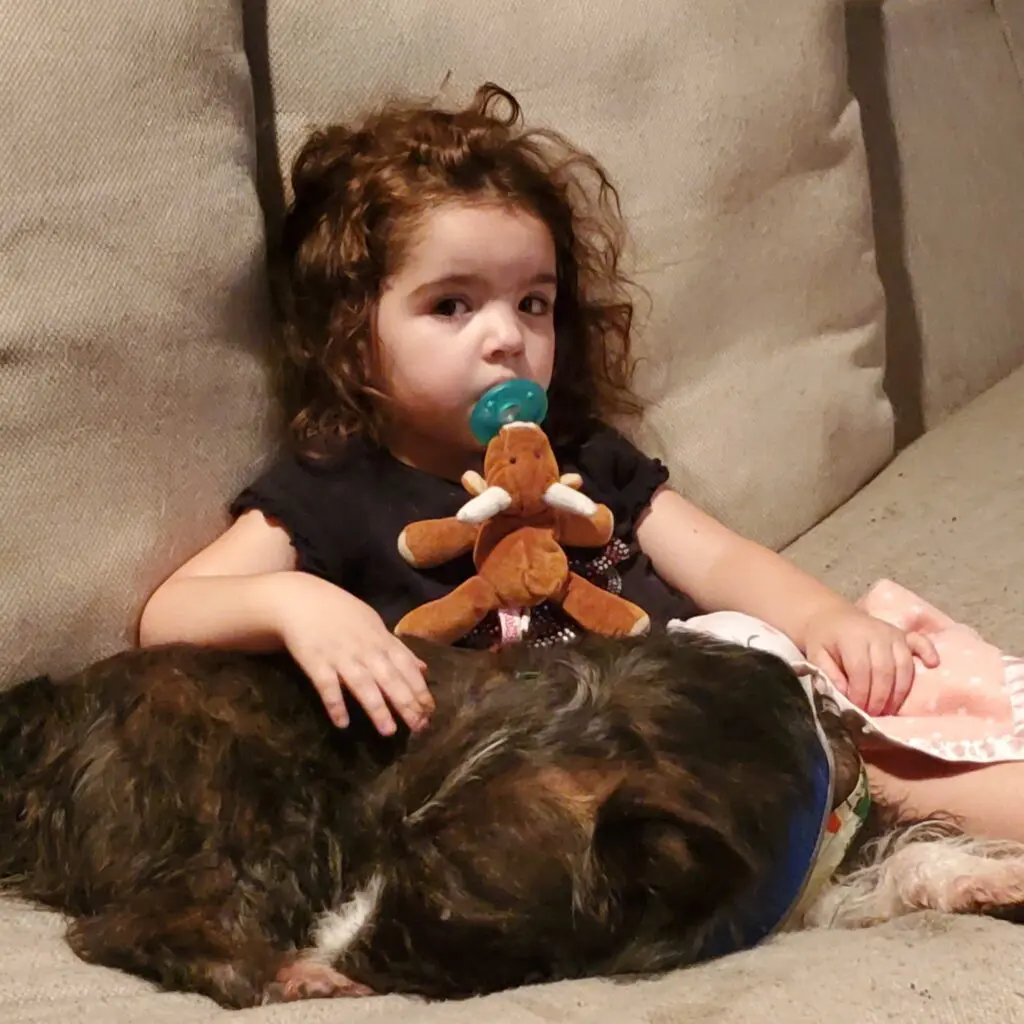New Baby or Dog/Children Challenges
If your pet is extremely sensitive to unfamiliar or loud sounds, you can desensitize it to baby sounds by playing baby sounds recordings. But not all animals respond to recorded sounds, so test your pet’s reaction first by playing the sounds at a real-life volume. If your pet shows any signs of arousal, fear, anxiety, or aggression, then begin desensitization: Start by playing the sounds at a volume low enough that your pet doesn’t react. While the sounds are playing, use positive reinforcement techniques, such as giving treats, feeding meals, playing with toys, or petting or brushing your pet. Over several sessions, very gradually increase the volume until your pet does not react to the standard volume sounds.
Once your pet adjusts to your new focus on the baby, it usually ignores this other creature in the house. Most of the problems seen between pets and babies involve crawling children (e.g., six months and older) and toddlers, not immobile infants. So it’s a good idea to look ahead to things that may change (e.g., the addition of baby gates) as the baby begins to crawl and walk since this time comes faster than you might anticipate. You should also provide resting areas that allow your pets to get away from curious children. Dogs should be fed in locations where it is easy for you to monitor their bowls if children are nearby. This may mean feeding behind barriers and switching from free-choice to meal feeding. Certainly, suppose there has been any history of a pet aggressively guarding food against other animals or people. In that case, it should be fed behind a barrier, and long-lasting treats (e.g., rawhides, stuffed hollow toys, marrow bones) should be available only when a pet is physically separated from a child.

Toddlers & Older Kids
Training a dog with children is just as much about teaching the children as it is about training the dog. You have to teach both to respect each other’s space and learn how to communicate with each other. I love involving kids in the training process!

